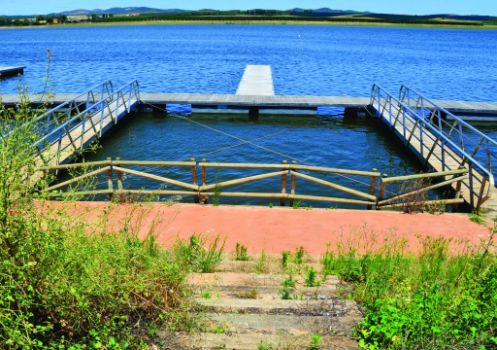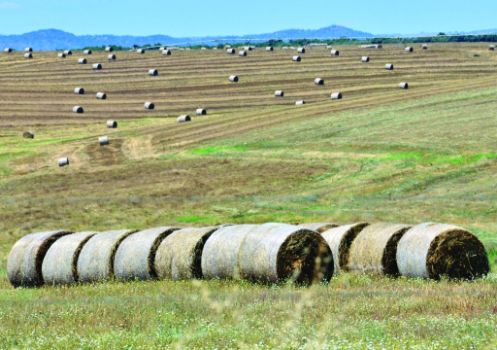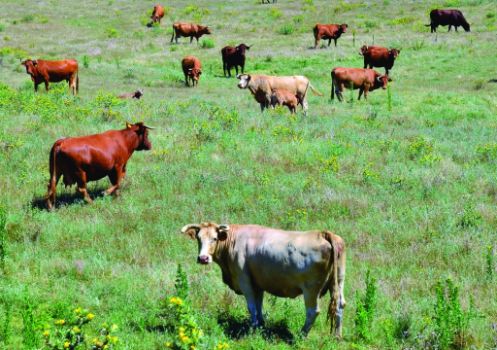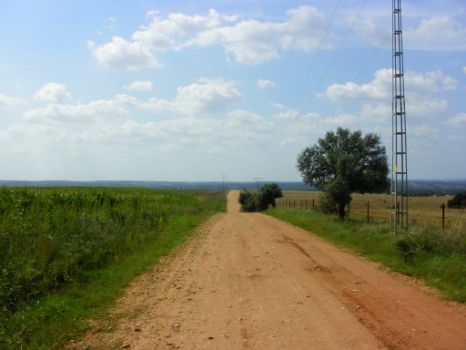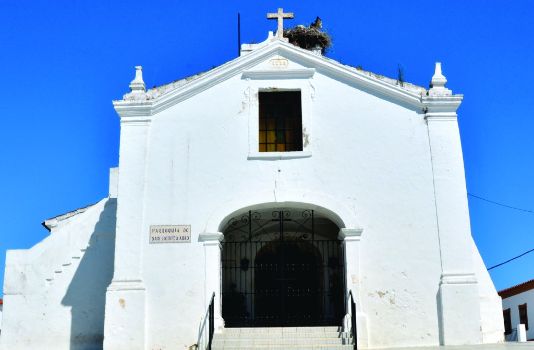Net of Natural
Trails

Stage 38: Villarreal - San Benito de la Contienda
Description
Through the route of the dehesas
In this Stage, one can enjoy the vast Extremaduran dehesas and its wildlife. The landscape is dotted with isolated buildings, reminiscent of past times, which are mostly used for developing this ecosystem.

The Stage starts at Villarreal, in the municipality of Olivenza, and heads towards San Benito de la Contienda along the shoulder parallel to the BA-104. Caution should be exercised due to motorised traffic. About 500 m from Villarreal, the route arrives at a bridge over La Charca Creek.
From here, the route continues on a dirt road for about 100 m to a bend on the BA-104. It continues along this road for 200 m, and then turns onto a path that emerges from the right. This path crosses a eucalyptus forest (Eucalyptus sp.) to Villarreal farmstead. It now turns right, heading along a dirt road flanked by holm oaks (Quercus ilex), until it reaches another intersection with the so-called Camino del Cabra, where it turns right. The landscape throughout the entire Stage is similar to the one described above, which does not make it less attractive.

Further on, the intersection leading to Hacienda de Murillo appears to the right; however, the Stage continues straight ahead.
Past Higuera Brook, the Trail reaches an intersection where it turns right. From here, it winds ahead through a landscape blanketed by vast pasturelands. Past these pastures, the route crosses through Monte Nuevo farmstead.
The Trail traverses through Monte Nuevo, amidst holm oak dehesas. Past the gate into Abugones farmstead, it ventures into a private hunting ground. In this Stage, the Guadiana Nature Trail runs far removed from the river, which never comes into view.

Further on, at the intersection, the route turns right, traversing through several cattle grids, gates and fords that dot the path. One may come upon free roaming livestock, accompanied by cattle egret (Bubulcus ibis). Caution should be exercised especially during the breeding season.
At the next crossroads, the route turns left toward San Benito de la Contienda, which lies only 20 km away. It continues straight ahead to another intersection, where it turns right. From here, the landscape changes due to intense human activity, in particular agriculture, with intensive production of corn and wheat, evidenced by the large centre pivot systems that dot the fields.

About ten kilometres from San Benito de la Contienda, past the agricultural buildings on Nuevo de Valongo farmstead, the route reaches another intersection next to reforested area, where it turns left. As the Stage approaches Provenza farmstead, one can see livestock roaming freely on grasslands. At this stage, after all these kilometres through dehesas and livestock farms, it is pleasant to come upon other human beings. About 5.5 km from San Benito, the route turns right onto a bridge over the Pintas Creek, close to Sesera farmstead, populated with shrub vegetation.
Further on, the Trail traverses again through holm oak dehesas.
The route continues straight ahead at the next two intersections, then turns left. A few metres further on, the Trail continues along a paved road to San Benito de la Contienda, the endpoint of this Stage. At the edge of the town, it crosses to the opposite side of EX-315.
Sites of interest
Profile
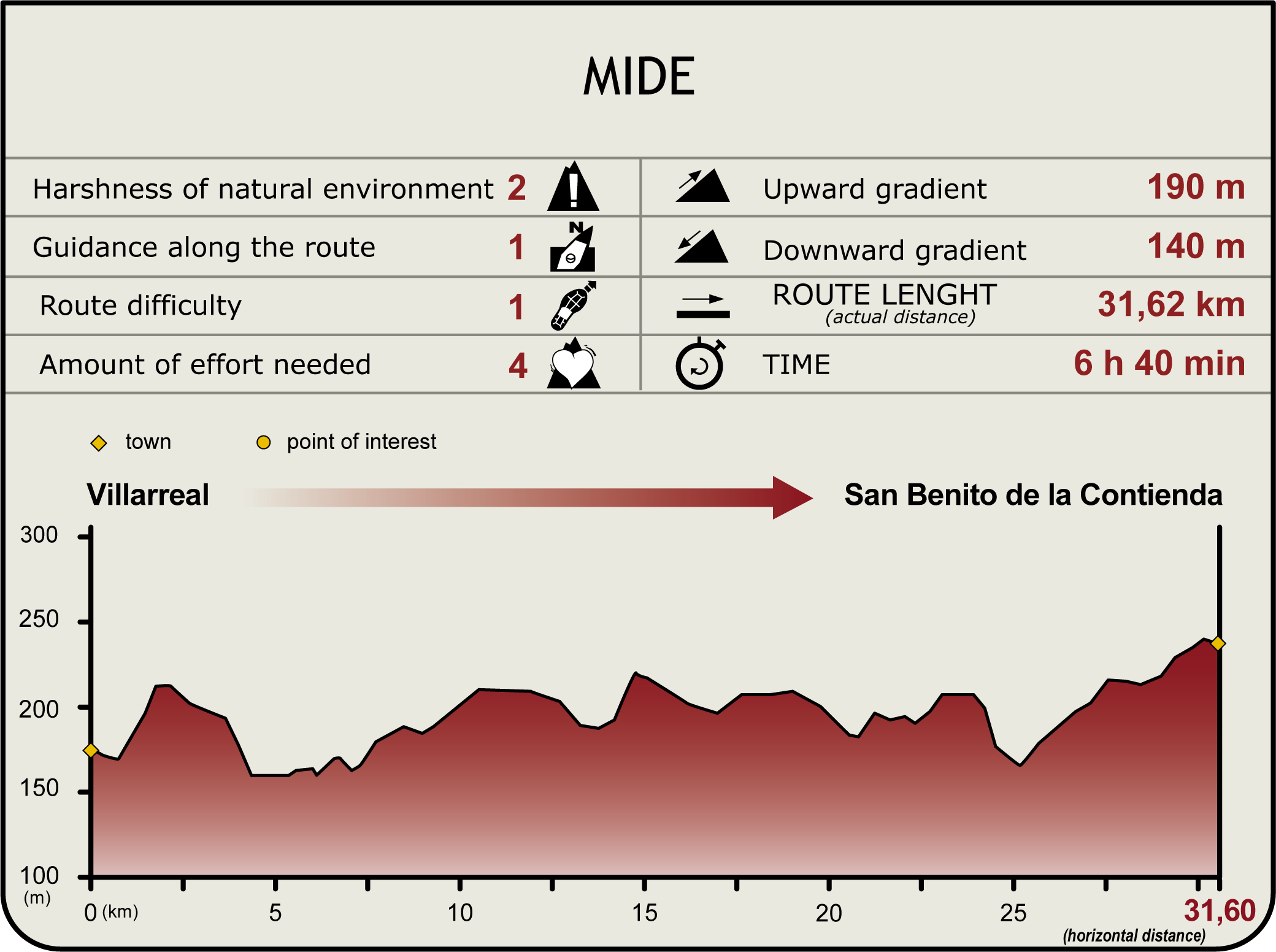
Highlights
Further information
History of Olivenza
In 1230, during the conquest of Badajoz, the King of León, Alphonse IX, granted the enclaves of Burguillos and Alconchel to the Templars. Several years later, in 1278, Alphonse X ("the Wise") evicted the Order of the Templar, handing the land over to the Council and Bishopric of Badajoz. In 1297, Olivenza was adjudicated to King Dinis of Portugal by the Treaty of Alcañices. The Templar castle has since then been rebuilt. It was granted a city charter and, under Portuguese rule, several military and civil buildings were built.
One of the most important construction works was Ajuda Bridge, with 19 arches and a 450-metre deck, destroyed in 1709. The Church of Magdalena and the Santa Casa de Misericordia are also two outstanding constructions. On June 6, 1801, under the Treaty of Badajoz that ended the War of the Oranges, Godoy legally placed Olivenza under Spanish sovereignty.



